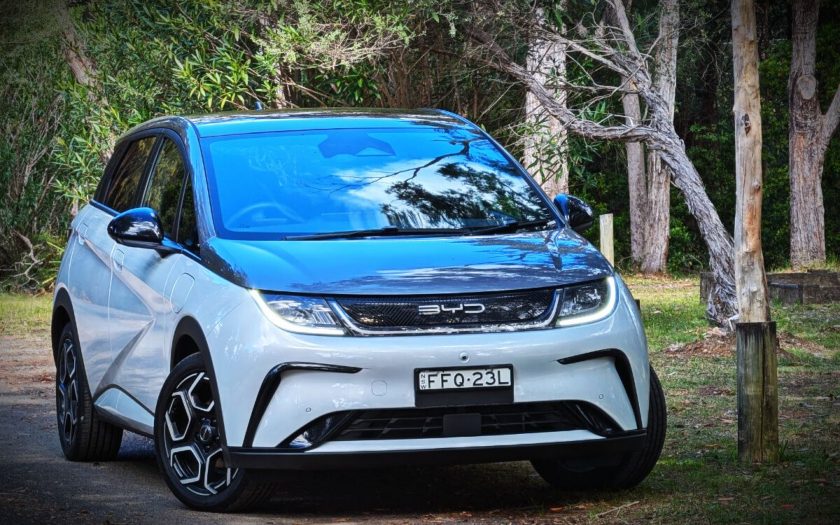Chris Riley tests the 2024 BYD Dolphin Premium small EV hatchback with pricing, specs, ride and handling, safety, verdict and everything the over-50 driver needs to know.
Summary: The new BYD shows that EV prices are falling all the time. But even at a bargain basement price, there’s no excuse for sub-par tyres.
2024 BYD Dolphin small EV hatchback
Pricing: $42,890 (plus on road costs)
Warranty: Six-years, 150,000 km, battery: eight-years, 160,000km
Safety: 5-star ANCAP (2023)
Engine: electric permanent magnet
Service intervals: 12 months or 20,000km
Power: 150kW
Torque: 310Nm
Transmission: single speed reduction gear, front wheel drive
Body: 4290mm (long); 1770mm (wide); 1570mm (high)
Build country: China
Kerb weight: 1658kg
Towing capacity: not stated
Luggage storage: 345L (seats up), 1310L (seats folded)
Wheels: 17-inch alloy
Tyres: 205/50R17
Spare wheel: tyre repair kit
Ground clearance: 120mm
Turning circle: 10.5m
Battery: 62kWh (60.5kWh usable)
Claimed range: 427km
Charging time: 30 hours (standard power point)
Consumption: 15.9kWh/100km)
Consumption on test: 14.2kWh/100km (407km)
seniordriveraus consumption on test: not tested
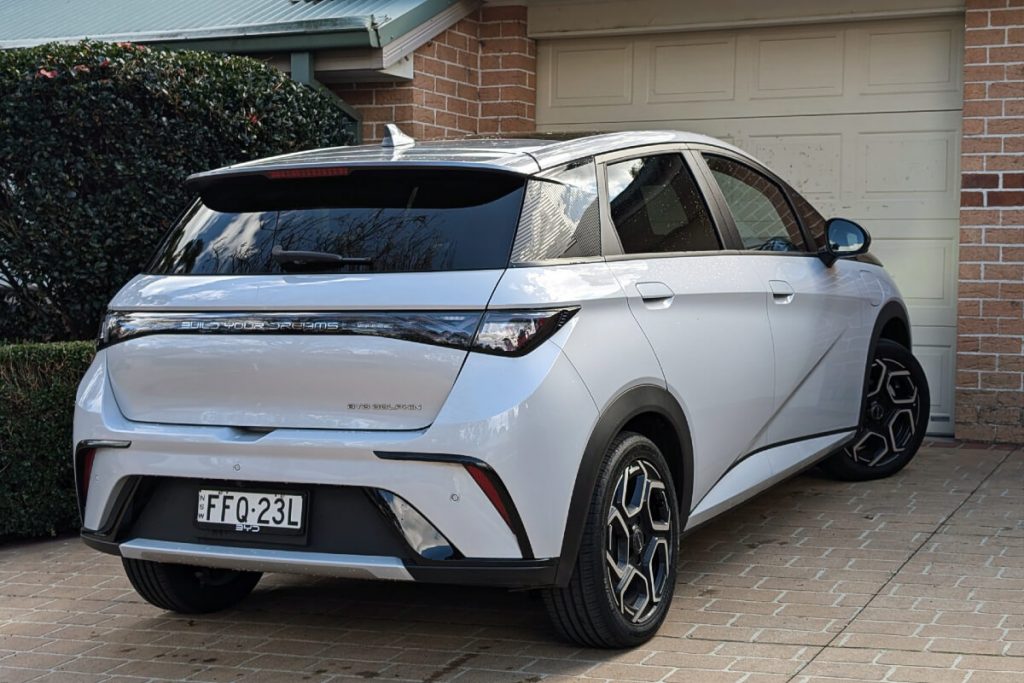
[review]
Dolphin was the first production model to feature BYD’s new logo.
It’s also the first and smallest of BYD’s electric vehicles to be offered here, in a range that now spans five models and will soon include a fully electric ute, the Shark.
Launched in August, 2021, Dolphin went on sale in August, 2023 followed in quick succession by the rest of the range.
BYD seems to have struck a chord with buyers as it is now one of the fastest growing brands in the Australian market.
But, as more Chinese brands enter the market, it forces the existing players to sharpen prices which appear to change frequently – so be sure to keep a weather eye on them.
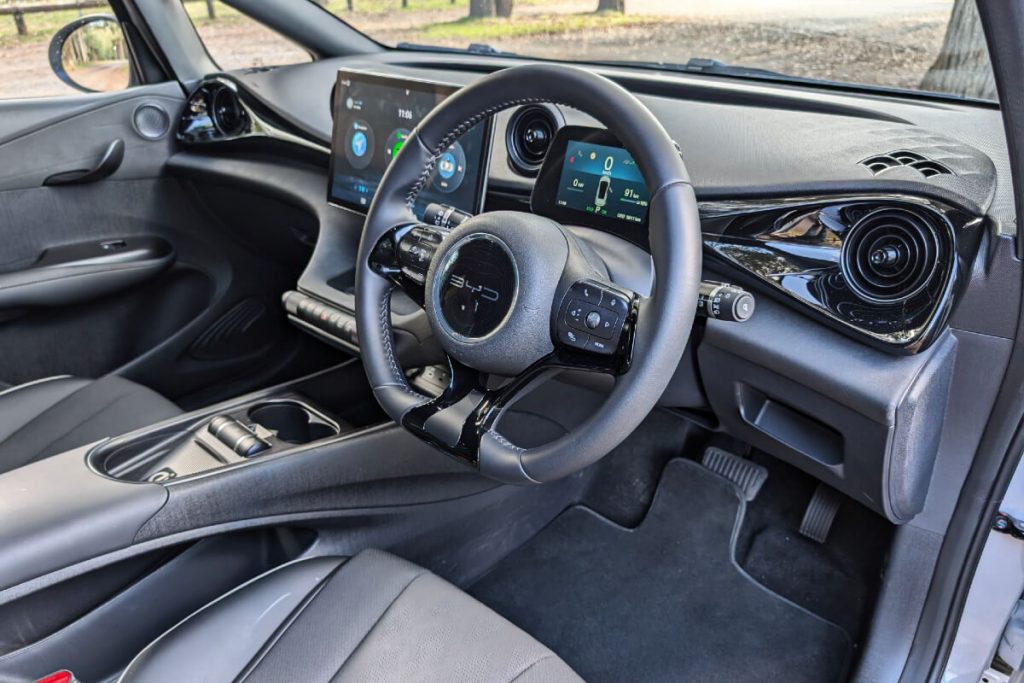
What’s it cost?
In terms of size and design, BYD Dolphin is a small hatch rather than SUV.
It’s difficult to tell them apart these days, but with an upright stance and high driving position, Dolphin could well be either.
There are two Dolphins from which to choose – Dynamic and Premium – priced from $36,890 and $42,890 respectively (driveaway pricing varies from state to state).
Dynamic kicks things off with a 45kWh battery, 70kW of power and 340km of range. Premium ups this to a larger 60kWh battery, 150kW of power and 427km of range.
Premium also adds two-tone paint, larger 17-inch wheels and more sophisticated multi-link rear suspension.
Standard equipment includes single temperature climate air, with artificial suede and leather trim, heated and power adjust driver and front passenger seats, keyless entry and start, rear privacy glass, and a full glass roof with a powered sunshade.
There’s also LED lights front and back, auto high beam, auto lights but not wipers, adaptive cruise control, speed sign recognition, front and rear park sensors and 360-degree overhead camera.
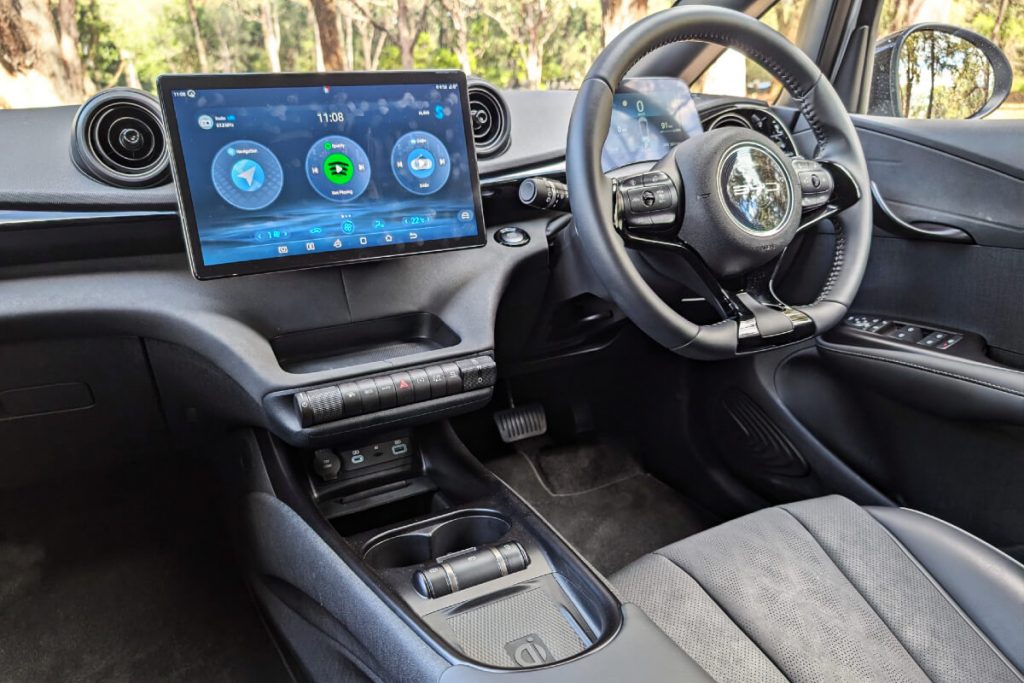
The infotainment system is controlled from a large 12.8-inch touchscreen that rotates at the push of a button, with another smaller 5.0-inch screen perched on top of the steering wheel for the instrumentation.
There’s Bluetooth, voice activation, AM/FM and DAB+ digital radio, built-in satellite navigation, wired Apple CarPlay and wireless Android Auto, plus six-speaker audio.
USB-C and USB-A ports are provided in the front, with another set in the back, plus wireless charging.
There’s also a 12-volt outlet and slot for a Micro SD card that supports up to 128GB.
The manual suggests you can record from the exterior and/or interior camera if fitted, presumably to the card.
NFC locking and unlocking is also supported.
Five-star safety extends to seven airbags, including a centre airbag, which provides added protection to front seat occupants in side impact crashes, as well as autonomous emergency braking (car-to-car, vulnerable road user, junction and crossing, backover and head-on).
Lane support comes with lane keep assist, lane departure warning and emergency lane keeping, a speed assist system and speed sign recognition.
There’s also front and rear cross-traffic alert with auto braking.
Two ISOFix child seat anchors are provided for the outer two rear seats as well as a top tether for the centre position.
Seal is covered by a six-year 150,000km warranty, with an additional two years and 10,000km on the battery.
Service is due every 12 months or 20,000km.
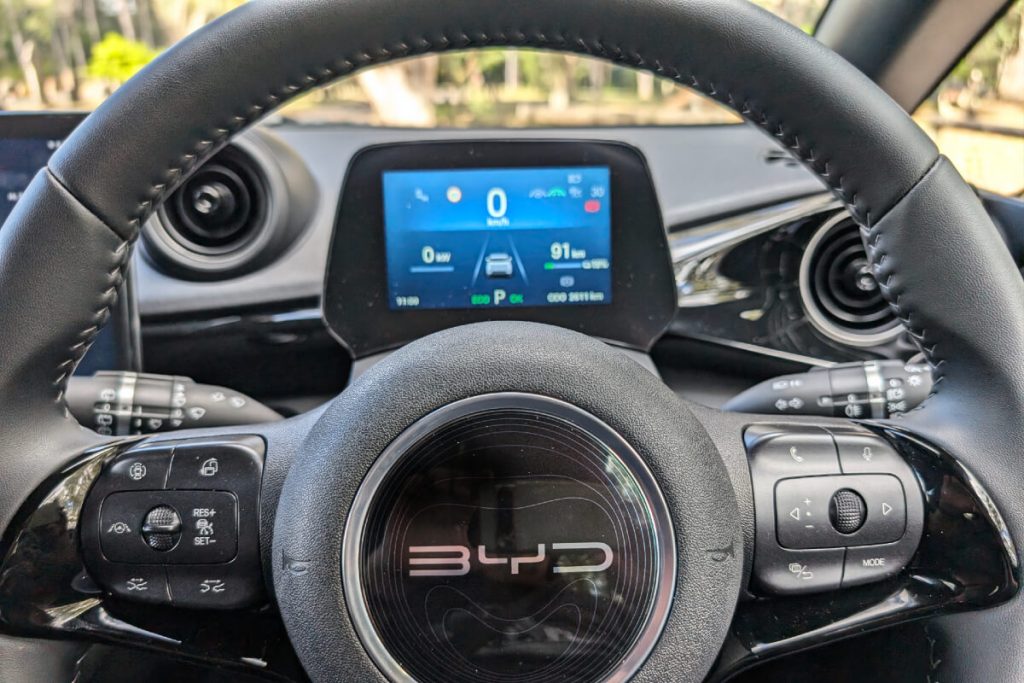
What’s it go like?
At just under 4.3 metres in length, Dolphin seats five, but front seat occupants could find themselves rubbing elbows.
Rear legroom is also limited and the back seat itself is better suited to two rather than three passengers.
The boot is small but a removable floor reveals considerably more space.
There’s just one problem – what do you do with the floor once it has been removed?
A tyre repair kit is supplied in lieu of a spare wheel which would normally go here.
And, just in case you’re stuck in a sinking car, a tool is supplied to break the windows. That’s a first. It sits in a retaining clip below the console; we thought it was a torch.
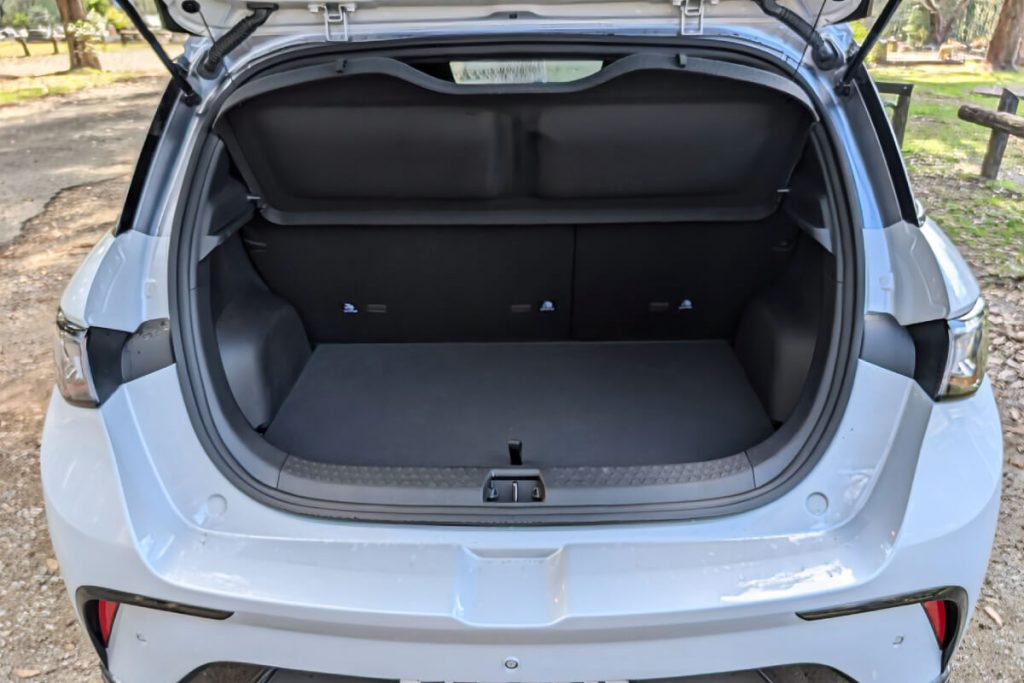
The front seats are heated and have power adjustment, while the rear seats split and fold in a 60:40 split, but you’d have to be tiny to fit in the single position.
There’s no shortage of storage receptacles, with two trays and a lower console level, plus two cupholders up front.
Unfortunately, the cupholders are not large enough to accommodate drink bottles, nor for that matter are the storage bins in the front doors.
The less powerful Dynamic model with a smaller battery is best viewed as a city car.
Premium with its larger battery and extended range could serve as an inter-urban commuter if required.
But even fully charged our test vehicle showed a range of 390km, not the 427km advertised.
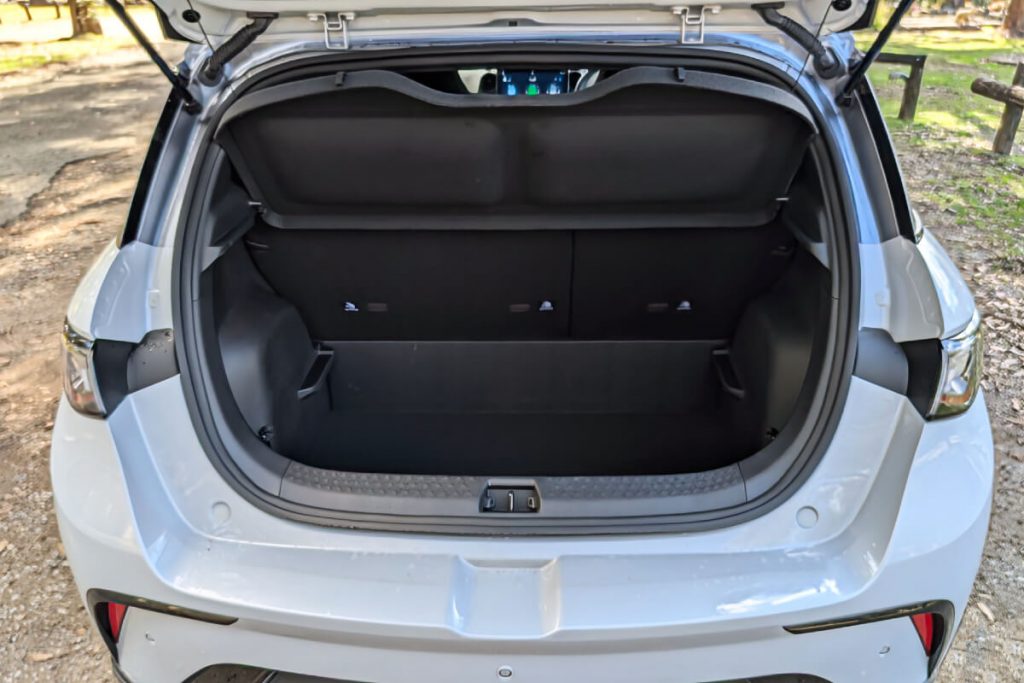
In Dynamic a single electric motor produces 70kW of power and 180Nm of torque, with drive to the front wheels through a single-speed automatic transmission.
With a 46kW battery (44.9kWh useable), it has a range of 340km (WLTP) and claimed energy consumption of 15.2 kWh/100km.
The dash from zero to 100km/h takes a leisurely 12.3 seconds.
Premium ups the ante with 150kW and 310Nm, plus a larger 62kW battery (60.5kW useable) and 427km of range, with energy consumption 15.9 kWh/100km.
It’s quicker out of the gates, with a time of 7.0 seconds.
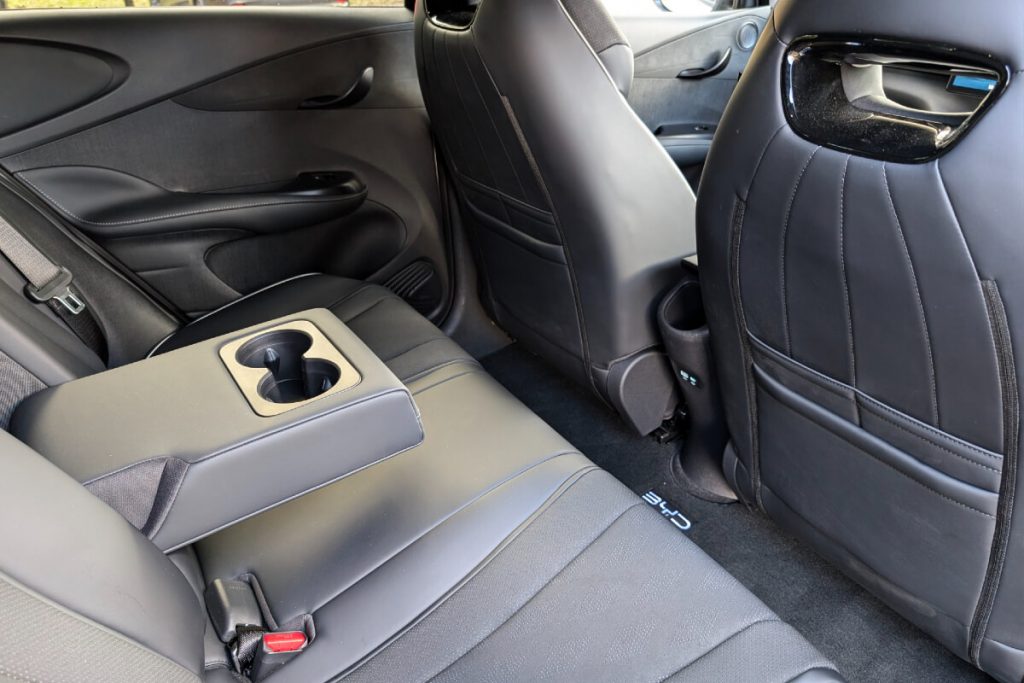
The Dolphin is fitted with a type 2 AC socket, with the charge socket located on the driver side front guard.
Like the Seal, charging is limited to 7kW from an AC source and 60/80kW with DC depending on battery size.
The smaller battery takes 23 hours to charge using a standard powerpoint, 6.0 hours with a home wallbox and as little as 36 minutes from 10 to 80 percent with a 100kW+ fast DC charger (DC charging is limited to 60kW).
Larger batteries take longer to charge and this blows out to 30 hours, 8.0 hours or 36 minutes the 62kW battery (maximum 80kW).
It is generally recommended to limit charging with rapid charges to 80 per cent to prolong battery life.
Firing up the Dolphin for the first time, the process of starting the car takes some getting used to, specifically finding what does what, as does putting it into park afterwards.
Foot on the brake and then you have to find the start button buried high on the dash to the left of the steering wheel.
The gear selector is located at the right-hand end of a row of rotating switches that sits underneath a small tray below the touchscreen.
The park switch on the other hand is a button located at the right end of the row, next to the drive selector. This also engages the parking brake.
Don’t make the mistake of getting out of the car without pushing the start/stop button to turn it off, or the car remains live – both my wife and I managed to do this on separate occasions.
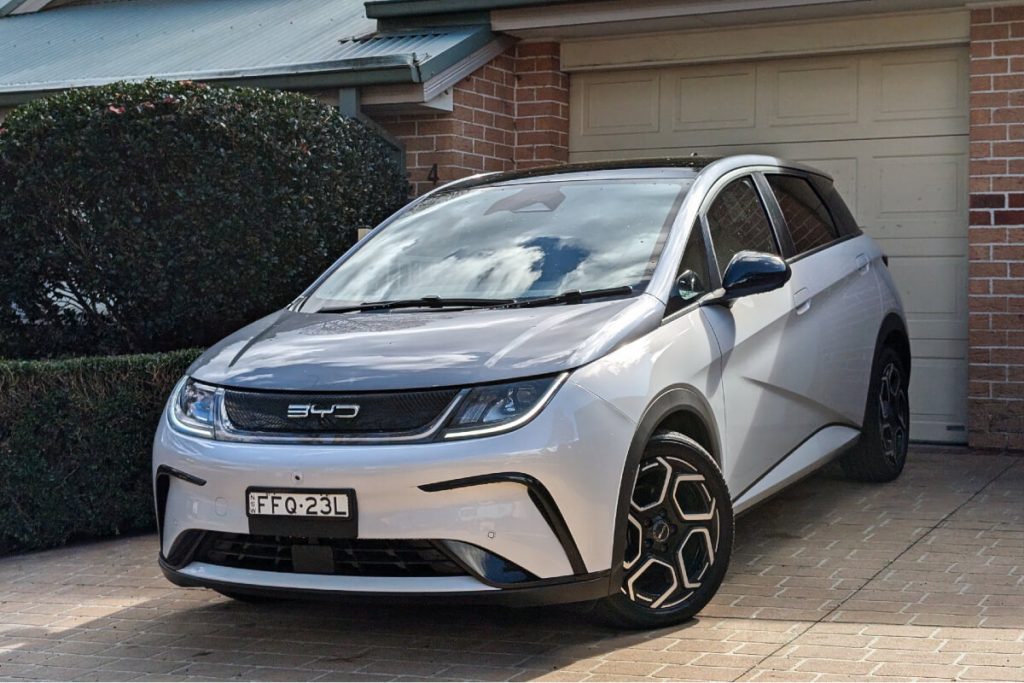
Like most electric vehicles, the car is responsive to the accelerator.
Although there are no gears as such, just forward and reverse, there are three drive modes: Normal, Eco and Sport.
Sport mode adds some urgency, but the Dolphin gets along okay even in Eco mode and this has the added advantage of maximising range.
The lane assist system has an annoying way of tugging at the steering wheel and it is easy to drift out of your lane if distracted.
The ride is quite soft and can become bouncy to the point of porpoising over speed humps and the like.
The first time we used satnav, after entering the address and hitting go – the system decided it was all too hard, shut down and rebooted.
Hmmm… We tried again and this time it worked, but then it lost satellite contact and got us lost. There was no warning, no spinning wheel, nothing to indicate there was a problem. We suddenly realised it had frozen, but alas too late, costing us 20km of valuable range.
That’s about the size of it in the world of point and shoot EVs.
With claimed energy consumption of 15.9kWh/100km, we were getting 14.2kWh after 407km of mixed driving.
This one comes with a home charge cable, so we were able to top it up overnight.
It also has a V2L cable for powering exterior equipment.
What we like
- Nice price
- Easy to drive
- Reasonable range
What we don’t like
- Small boot
- Soft suspension
- Lane assist tugs at wheel
- Satnav hit and miss
- Infotainment system difficult to navigate
What over-50s need to know
EVs are getting better, even the small ones like the BYD Dolphin.
The price is right and one overnight charge will probably do you for the week.
That makes Dolphin the ideal city car, as long as you have access to a public charger or are prepared to install a wallbox. Really, a wallbox is the only way to go.
seniordriver comments
The BYD Dolphin is proof that electric vehicle prices are coming down. The Dolphin claims to be the cheapest EV, if only by a tiny margin. Anybody considering a BYD Dolphin will also benchmark the other two cheapie Chinese EVs.
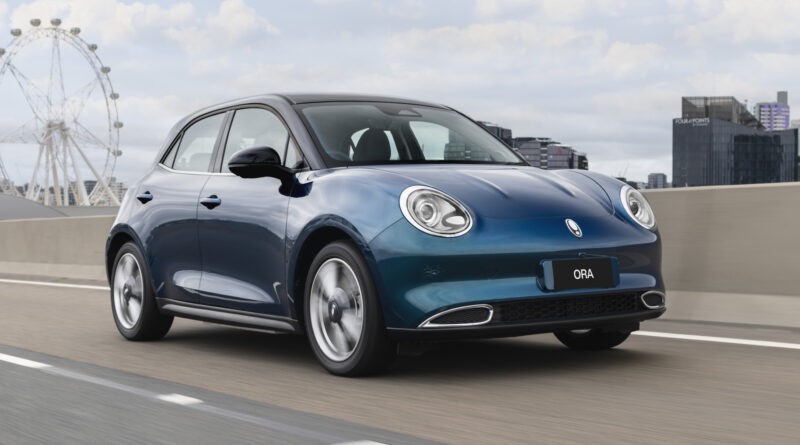
The entry-level Dolphin is $38,890 plus on road costs. Moving up to the Premium, which has significant advantages, the price jumps by $6000. That pits it against the mid-spec GWM Ora Extended Range ($45,990) and the MG Excite 64 ($44,990). The MG is rear-wheel drive and claims 150kW and 250Nm. The Ora is the loser in this comparison. Also FWD, its figures are 126kW and 250Nm.
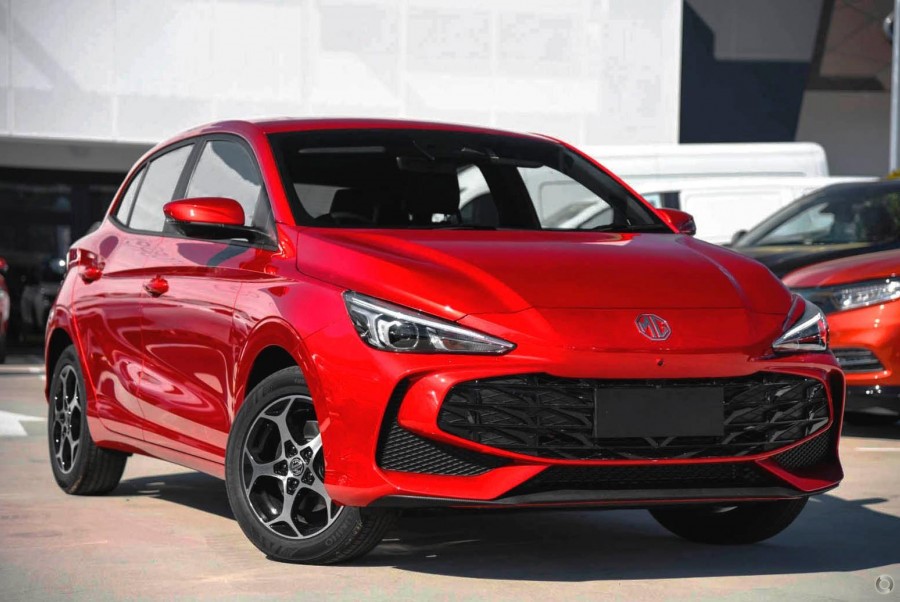
The Dolphin is really a city-sized hatch, being smaller than either the Toyota Corolla and Hyundai i30 hatch.
The Chinese tyres are also a disappointment. They are Linglong Comfort Masters and their fairly narrow footprint has some difficulty handling what the electric motor delivers.
BYD are giving people thinking about a Dolphin a chance to experience one for themselves. There are a limited number of Experience Centres across the country where intending buyers can experience all BYD vehicles.
